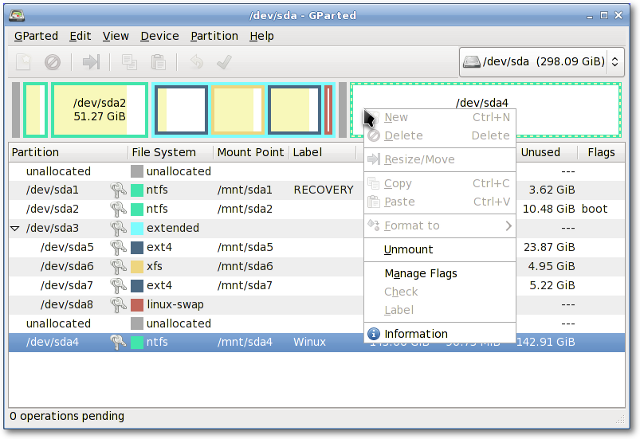2.2.2. Partition Management
Before installing Salix (from the live CD or not), you need to have the necessary partition space available on your system, and if the computer does not have a separate partition for Linux, you must create one before installing Salix OS.
It is advisable to back up any important files before modifying the partition table.
Every Salix Live CD comes with
Gparted, which will enable you to change the partition organisation on a disk device while preserving the contents of the partitions. You may with to use this application to create/re-organise your partition table.
Alternatively, if you have an unformatted partition, unallocated disk space, or an existing partition you do not use, you can create or rewrite a new partition table using
Cfdisk (which comes with the Salix installation CD).
Both applications are simple to use and require no further explanation on how to use them, except for a small comment about “partition types”.
A hard drive space can be divided into no more than four “primary” partitions, which can be problematic if you are hosting more than one operating system on the same hard drive. A hard drive can, however, be divided into three “primary” partitions and one “extended” partition. The extended partition can then be subdivided into “logical” partitions and hence overcome the limitation set by the “primary partition” (i.e. no more than four partitions). In practice, there is no difference between a logical and a primary partition except for that “Windows” OS cannot be installed on a logical partition.


